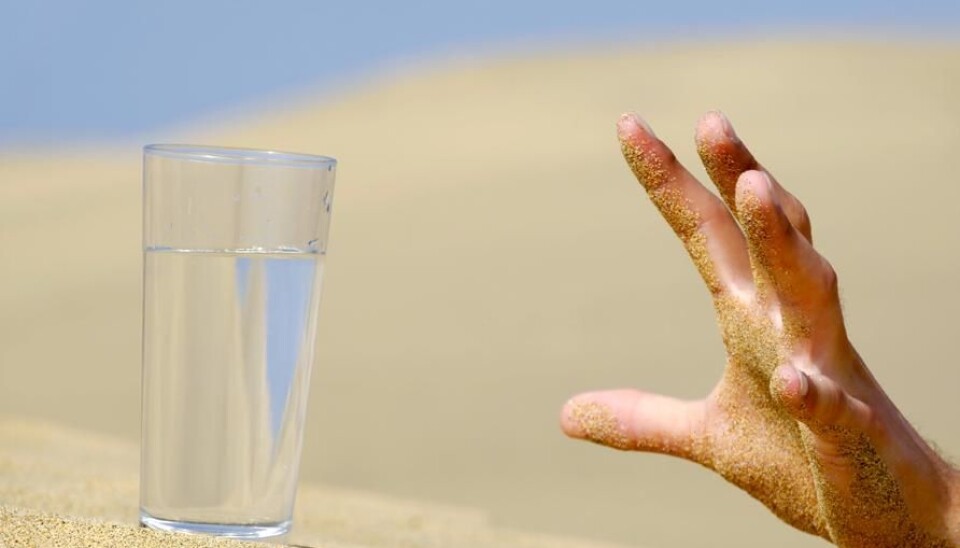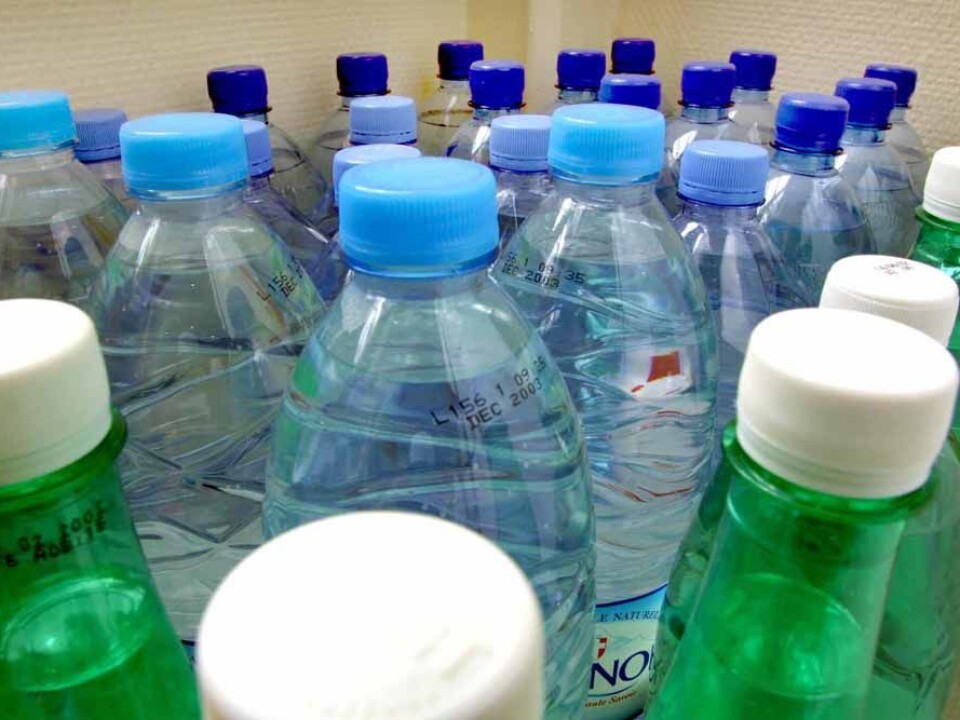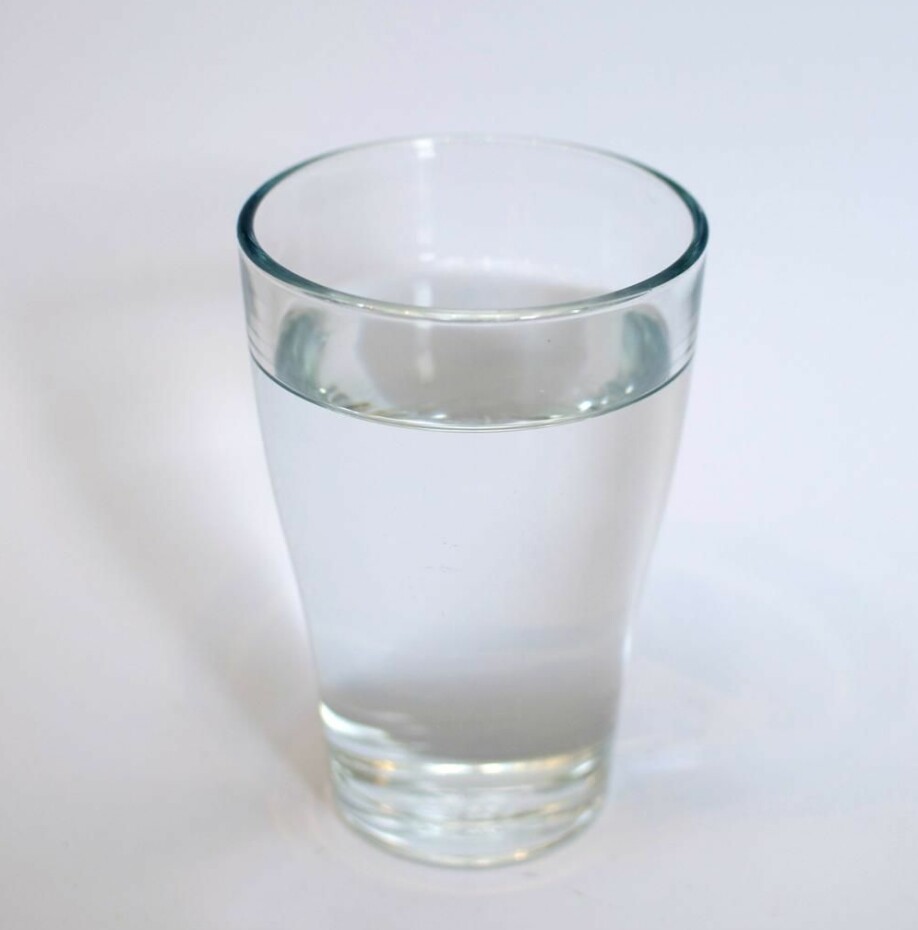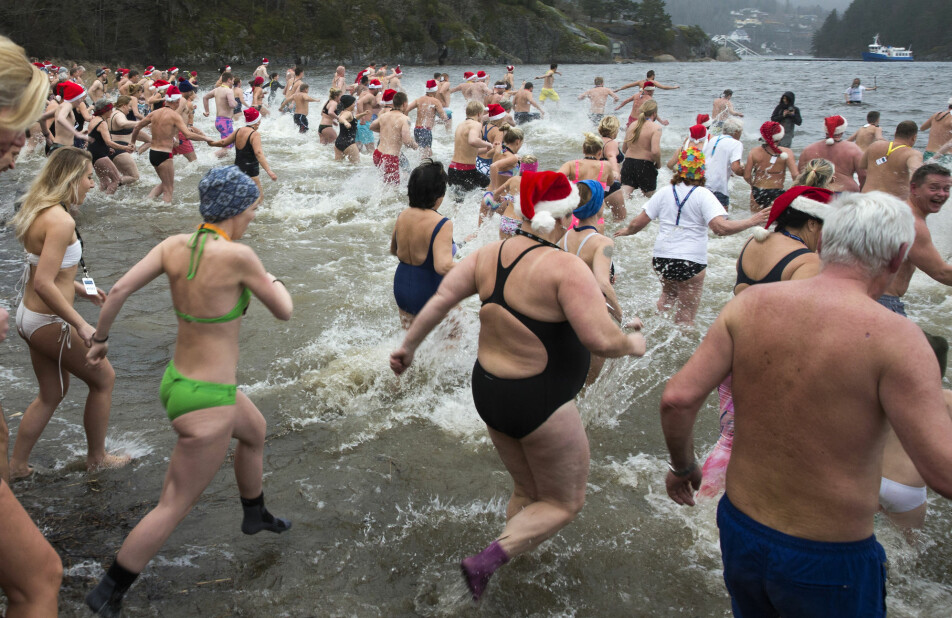
Can water spoil?
A half-full bottle of water has been left in the fridge for months. Can we drink it?
Denne artikkelen er over ti år gammel og kan inneholde utdatert informasjon.
You are thirsty, very thirsty!
And you are in a place without water, without anything that can soothe your parched throat. There are no stores around.
Then you remember. In the bottom of your bag you have a half-full bottle of water that you bought weeks, maybe even months ago.
Normally you wouldn’t even consider it, but today the big question is:

Can you drink the rest now?
Keeps for ages
The answer is yes, according to Truls Krogh, director of the Department of Water Hygiene at the Norwegian Institute of Public Health.
“If the water is covered and of good quality to start with, in principle it can last a thousand years,” he says.
This also goes for water from the faucet.
“Of course there can’t be much organic matter in the water, which there isn’t in the water most Norwegian homes have on tap. As long as it’s been contained in a closed bottle that doesn’t let any substances into the contents it can keep for years without becoming dangerous to drink,” says Krogh.
Even if the bottle has been opened and you’ve taken a few swigs right from it.
Beyond the expiration date?
This is uplifting news for everyone who tends to forget half-empty water bottles in their gym bag. Krogh’s assurances force another question to the surface:
If water doesn’t get bad – why is there a shelf-life date printed on the bottle cap when we buy it in the store?
“This is probably the result of a bureaucratic decision,” says Krogh.
And then there’s the taste. The fact that water is drinkable doesn’t mean it still tastes okay.
A petroleum aftertaste
Krogh says that as time passes water that is contained in plastic bottles takes on a strange taste. Although the plastic is tight enough to hold water, it isn’t impenetrable to molecules floating in the air.
“There are always other smelly things, for instance in a refrigerator. These odours can give the water a foreign taste. If you keep plastic bottles of water in the garage they could develop a petroleum or petrol aftertaste."
But if you happened upon a bottle of artesian water from the early Neolithic in the back of your pantry, there’s no reason not to take a sip.
“Old bottled water isn’t dangerous to drink but it can taste bad,” says Krogh, who thinks this is one of the reasons for expiration dates on water bottles.
“If it has been stored poorly it’s likely to develop a bad taste and this could dent the reputation of the bottling plant."
Emergency storage in glass
You might find a real old glass bottle of water in your basement. Unlike plastic, glass is impenetrable for odours. So there’s a better chance of it tasting good.
If you are the anxious sort who wants to store a few litres of H2O in case the world goes under, you ought to invest in some good glass bottles.
“You don’t need to sterilise them,” says Krogh.
Just fill well-cleaned glass bottles with tap water and close them tightly. The water will last your entire life, in fact longer.
Old glasses of water

So we can drink from water bottles even if they’ve stood around a long time. What about open containers with no cap or lid? Can you drink that glass of water that has been on your desk since last Wednesday, or from the carafe placed on the meeting room table a week ago?
Once again the answer is yes, according to Krogh.
“The taste may be a bit flat but it isn’t harmful,” he says.
Even without being capped, water is potable for weeks or months as long as it hasn’t been polluted by dirty fingers or spit which is full of bacteria. Even if someone has sneezed right into it there’s no certainty that it will remain infectious as time passes.
“Very few pathogenic bacteria can survive in clean water. After a while they will simply die out. But harmful bacteria can bloom if given sufficient nutrients. In a vase of tulips for instance, you get a growth of bacteria that you don’t want to pour inside you,” says Krogh.
Safe from the dispenser
Even pure water can become something you wish to avoid if it has stood uncovered long enough. In the course of weeks or months it will become polluted by dust, which in turn could give nourishment to microbes.
But if you rinse out the pitcher from the meeting room table, refill it with new water from the office dispenser – where the liquid has stood still, but covered, for half a year – you’ll be safe and sound.
Krogh says he often drinks vintage water.
“We have an old-fashioned mountain cabin without indoor plumbing. If there is any water left when we head for home we often leave it there until next time we come, maybe in a month or two.”
Surely if the director of the Department of Water Hygiene at the Norwegian Institute of Public Health can drink it, we can too.
Translated by: Glenn Ostling
———
Read the Norwegian version of this article on forskning.no
































